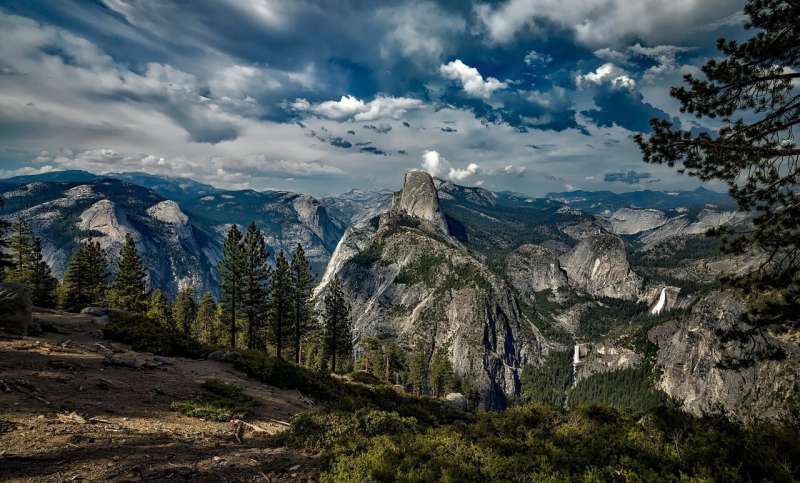
In mountainous western North America, vegetation cover has moved upward at a rapid rate over the past several decades, according to a study published in PLOS Climate by James R. Keller at Brown University, Providence, Rhode Island, United States, and colleagues. Understanding such shifts in species distribution could provide insights on the velocity of climate change and aid conservation planning.
As climate change warms areas of the planet, species must shift their distribution north and to higher elevations in order to retain their historical temperature range. The adaptive ability for species and ecosystems in mountainous areas to keep pace with the velocity of temperature change is not well documented.
To better understand such species’ response, researchers analyzed 27 years of high-resolution satellite elevation data within nine mountain ranges in western North America, taken between 1984 and 2011. Using satellite images, they quantified changes in vegetation cover at different altitudes in mountain ranges hosting a range of ecosystems including tropical, subarctic, coastal, and interior desert.
The researchers found that upward shifts in vegetation at the highest elevations across diverse ecosystems were ubiquitous across ecosystems and occurred at fast velocities, outpacing many similar animal responses to warming temperatures. Future research is needed to provide more recent data, as the study does not capture changes from the last twelve years. Additionally, a lack of historical data prior to 1984 limits researchers’ certainty that rapid changes in vegetation distribution has a causative link with climate change.
According to the authors, “Our findings help to characterize patterns of vegetation across elevations in mountains that range from the subtropics to the subarctic. If substantiated, this finding could warrant reconsideration of a current cornerstone of conservation planning. More work is needed to better contextualize how the vegetation shifts we observed, which measure any green vegetation, relate to individual species movements and broader ecosystem transitions–as this sort of integration offers the potential to create a more holistic understanding of change in montane systems.”
The authors add, “NASA satellites, in combination with powerful computing, provide a view of our planet like never before, giving us the ability to understand how natural ecosystems are responding to changes in the environment.”
More information:
High-velocity upward shifts in vegetation are ubiquitous in mountains of western North America, PLOS Climate (2023). DOI: 10.1371/journal.pclm.0000071
Journal information:
PLOS Climate
Provided by
Public Library of Science
North American mountain vegetation is rapidly shifting higher as the climate warms (2023, February 15)
retrieved 16 February 2023
from https://phys.org/news/2023-02-north-american-mountain-vegetation-rapidly.html
part may be reproduced without the written permission. The content is provided for information purposes only.